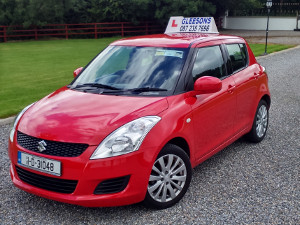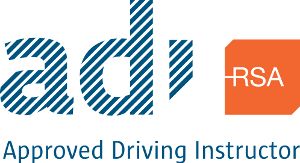GLEESON'S DRIVING SCHOOL
CLONMEL & THURLES

Call for DISCOUNTS
HOME
CONTACT
View clients
FEEDBACK
Driving Test
Tutorials
EDT Tutorials
EDT info
Thurles
Driving Lessons
Clonmnel
Driving Lessons
Rules of
the road
Road Signs
Techincal
Questions
Driving test
information
List of RSA
Instructors
Book your
Driving test
Book your
theory test
Here are sample technical questions that you may be asked on your driving test.
TECHNICAL QUESTIONSQ. How would you carry out a check on your engine coolant?
A. When it has cooled down, check the level is between the max. and min. marks, with the car
on level ground.
Q. How would you carry out a check on the engine oil?
A. With the engine off for a few minutes, take out the dipstick, wipe it clean, put it back into the
same hole, take out again and check the oil level is between the max. and min. marks.
If the oil is low fill up here (point)
Q. How would you carry out a check on the brake fluid?
A. check the level is between the max. and min. marks when the car is on level ground.
Q. How would you carry out a check on your power steering fluid?
A. With the car on level ground check the level is between the max. and min. marks
or, take out the dipstick, wipe it off, re-insert, take out and check the level is between the max. and min. marks.
Q. How would you check your windscreen washer fluid?
A. Point to it. Open it and look inside.

The above questions are the 'under the bonnet' questions. You show the tester where it is
and tell him how it is checked. You don't need to touch anything under the bonnet.
Q. What would you check on the tyres?
A. Check, correct air pressure, that the tread is at least 1.6mm in depth and worn evenly
and no defects in the wall of the tyre, like cuts, bulges or cracks.
Q. How would you check your reflectors are in good condition?
A. Make sure they are clean and not cracked.
Q. How would you check your brake lights are working
if you were on your own?
A. Reverse up to something reflective, like a window, push the brake pedal
whilst looking out of the rear window.
Q. How would you check that the handbrake is correctly adjusted?
A. It should pull up approx. 5 clicks and hold the car on a hill.
Q. How would you check the power steering is working before starting off?
A. With the engine off turn the steering wheel it will feel heavy, starting
the engine should make it go suddenly light, and turn freely both ways.
Q. How would you test your brakes?
A. Making sure it is safe behind, when first moving off, press the brake pedal
it should not feel soft or spongy.
Q. How would you check your headlights are working properly if you were on your own?
A. Turn the ignition key to make the dashboard warning lights come on,
switch on the headlights, and get out and check them. You must not turn on the
engine and leave the vehicle.
Q. If your indicators flashed very quickly what would this mean?
A. One of the indicator bulbs have blown.
Q. What would you check on your wheels?
A. That the wheel nuts were tight and there is no damage to the rims.
Q. How would you know that your engine oil was low without opening the bonnet?
A. There would be a warning light showing on your dashboard.
Q. How would you know the engine coolant was low without opening the bonnet?
A. The temperature gauge would go very high.
Q. How would you know the brake fluid was low without opening the bonnet?
A. A warning light would show on thw dashboard and the brake pedal may feel soft and spongy.
Q. How would you know that the power steering fluid was low without opening the bonnet?
A. The steering would become heavy and noisy.
Secondary Controls
You will also be asked 3 questions on the secondary controls of the car.
Below is the layout of the driving school car.


DAVID GLEESON
Approved Driving Instructor
No. F34617